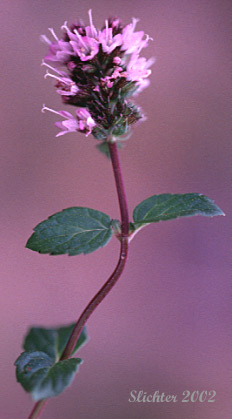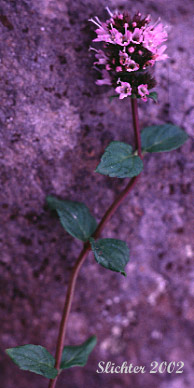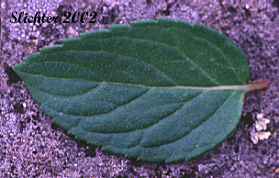
 Peppermint
from the west bank of the Deschutes River at its mouth, Columbia River Gorge........September
15, 2001.
Peppermint
from the west bank of the Deschutes River at its mouth, Columbia River Gorge........September
15, 2001.Peppermint is an introduced perennial herb with simple to freely branched stems from 40 to 100 cm high. The herbage of stems and leaves is mostly glabrous. The leaves are opposite on the stems, and are lanceolate to ovate or oblong in shape. They are short-petiolate and range from 3-6 cm long with toothed margins.
The inflorescence consists of terminal cylindrical spikes from 2-7 cm long and 1-1.5 cm wide. The calyx measures 2.5-3 mm long. The corolla is whitish or rose-colored and approximately twice as long as the calyx.
As with many mints, peppermint spreads easily both by seed as well as underground rhizomes. The active ingredient of peppermint is menthol which can be used to calm "upset" stomachs. The leaves may be eaten freshly picked or dried for use in teas.
Peppermint is found along streams and roadside ditches and in moist, disturbed bottomlands.
Peppermint is native to Europe. It is now widely established across much of North America.
In the Columbia River Gorge, it may be found between the elevations of 600'-1600' between Crown Point and Angel's Rest.
